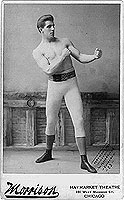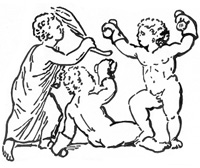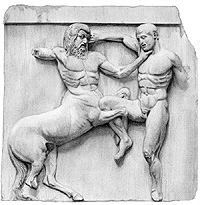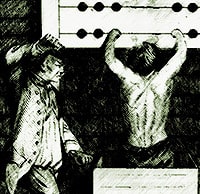For use with a simple troop strength system such as Divine Right, Civil War or Samurai.
In a game where one combat unit is generalized to the point where they are indistinct, leadership, deeds and feats make the difference.
Each player will roll 7 six sided die and assign the results as 1-6 rating for the following characteristics.
Vitality__
[How many wounds he can take before dying.]
Heroics__
[His ability to commit daring feats such as surviving shipwrecks and sieges and turning the tide of battle by taking a mortal risk.]
Duel__
[Individual combat and assassination are governed by this trait.]
Maneuver__
[Ability to forced march troops, avoid battle and retreat from battle.]
Battle__
[How many die rolls his leadership of an army gain per round.]
Siege__
[How many rerolls his command of a besieging force gain per a turn. Sieges are conducted 1 roll per turn, not in multiple rounds.]
Rally__
[The ability to rally flagging troops at the beginning of a battle round and to reactivate broken troops after a battle.]
Basic Mechanics
The 16 rating is used in one of three ways, with the higher rating always better:
1. Comparatively for battle and siege. Two leaders with the same score nullify each other. If leader A has a 6 rating and leader C has a 4 rating, than leader A would have two battle die in addition to his army die and in siege would gain two break-in rerolls.
2. Actions for duel and vitality. A duelist rolls the number of dice indicated by his rating, with a 6 causing a wound to the opponent and a 5 effecting the negation of a wound against him. Vitality points may also be lost due to attempting heroic deeds with vitality placing a cap on a leader's ability to duel and wax heroic. A leader with zero vitality is simply alive, unable to use any of his powers. When he reaches -1 he is dead. A disabled leader my be restored by rolling a 6 after every full turn of inaction. [He may only move and that at half the game allocation for leaders].
3. Skill checks for heroics, maneuver and rally. A leader who wishes to rally or reactivate troops must roll his rating or less for each unit. To avoid battle, or retreat from battle at the end of a round, he must roll his rating or less. To commit a heroic deed he must roll his rating or less. If he rolls his rating he loses 1 vitality and gains a number of rerolls equal to his rating. If he rolls less than his rating he gains a number of wounds and rerolls equal to the difference. If he rolls higher than his rating he takes a number of wounds equal to the difference and gains no rerolls. The heroic ability also determines his ability to escape from sunken fleets, fallen fortresses, annihilated armies and searching armies by rolling less than his rating. A higher score results in capture. A lower score results in escape/survival. A roll of the heroic score results in death.
Battle Mechanics
A defending army may attempt to avoid combat by making a rating check and moving one space off.
Once battle is joined each unit that is not flagging or broken rolls 1d6.
A 5 result causes a unit to flag at the end of a round. A unit which is not rallied before the second round is broken and may merely serve as casualties and a part of the retreating force at the end of the battle.
A 6 result eliminates a unit.
Once all rolls have been made and both players have flagged or eliminated units, a leader might attempt to rally his troops or retreat from the battle.
Rounds continue until one side has retreated or has had all of its units flagged or eliminated. A force of all flagged units is broken and automatically retreats.
If all forces are eliminated and only the leaders remain [after making their heroic-survival check] then they may duel or attempt a retreat.
Leaderless armies my not attempt to rally or retreat, but automatically retreat when all units have been flagged. Flagging units may be eliminated as casualties but may not be double-flagged.
At the end of every game turn, all broken units which are not besieged, are restored.
Siege Mechanics
1. The besieging force must be as strong as the rating of the fortress and have zone of control [every other space] around the castle.
2. At the beginning of each turn, before movement, a single break in roll is made.
3. A 1 causes a besieging troop loss of 1, a 6 is a break-in. [See leader siege rating above.]
4. A break in results in a battle between the besieging unit or stack of units or leader stack which was assigned by the controlling player as the breaching force. [Besieging force should consist of a main breaching force and weaker supply interdiction "picket forces"]. Besieged forces may not retreat, but besieged forces may retreat at will, after any round. All defending forces must be eliminated. Broken defenders may continue fighting but results of 6 are counted as 5.] Broken defender units never rally unless a leader is present, so long as the siege holds.
5. Unbroken defenders may sortie, attacking out against any besieging force that did not break-in. If victorious against a besieging unit or stack or leader stack, that force might breakout, by occupying the zone previous held by the besieging unit, or retreat back into the fortress. This force may not split, but must stay together.
Books by James LaFond
link › jameslafond.blogspot.com











